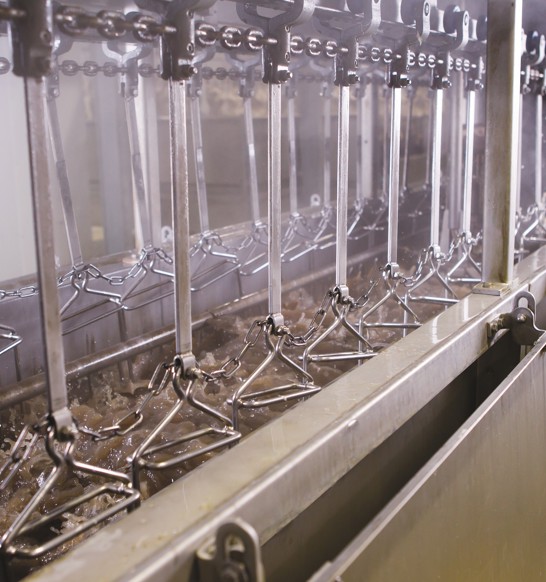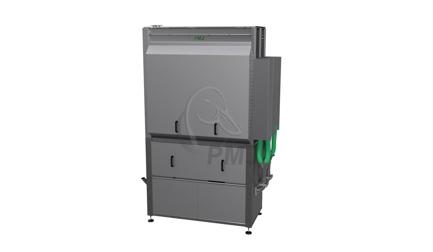Information
Scalding is the first step in the process of feather removal. The scalding process largely determines the appearance, color and visual quality of the end product. It can also influence yield and shelf life.
Marel PMJ's immersion scalding process makes use of multiple tanks with hot water flowing in opposite direction. Duck scalders need extra agitation to deal with the floating capacity of ducks. The agitator causes a downward water flow which keeps the ducks immersed for most effective scalding.
In these counterflow tanks, ducks are immersed in the powerfully agitated hot water, which transfers heat to the feather follicles. Due to the balance between water and the amount of agitated air to loosen the feathers, ideal equal heating around the product’s skin is realized without overheating the tail or breast skin. In this way, feathers are loosened to allow for easy, mechanical removal by the plucking/picking system.
Marel PMJ immersion scalding ensures optimum heat transfer and precise temperature control, two vital characteristics of a first-class scalding system. Optimum heat transfer ensures that scalding is done efficiently. Precise temperature control is important for any scalding process, depending on the choice whether the scalding has to be soft, medium or hard.
Marel PMJ has taken several measures to ensure an energy-saving scalding process. The water level control system checks the water height precisely, so that fewer cubic meters of water are needed per bird. The clean process with less dirty water results in lower treatment costs. Finally, the Immersion Scalder has been designed for optimal cleanability.
In a larger processing line, for higher capacities, a second, modular scalder without water agitation can perform an extra scalding operation without having to deal with dirt on the products.



